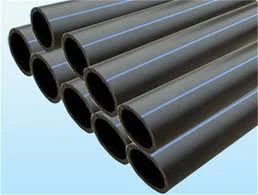10월 . 09, 2024 04:20 Back to list
pvc pipe coupling
Understanding PVC Pipe Couplings A Comprehensive Guide
PVC (Polyvinyl Chloride) pipes are widely used in various plumbing, construction, and industrial applications due to their durability, corrosion resistance, and cost-effectiveness. Among the essential components that make piping systems work efficiently are PVC pipe couplings. These fittings play a vital role in connecting two sections of pipe, facilitating the transport of fluids while ensuring leak-free operations. In this article, we will delve into the significance, types, and applications of PVC pipe couplings.
What is a PVC Pipe Coupling?
A PVC pipe coupling is a fitting used to join two lengths of PVC pipe together. It serves as a connector that maintains the integrity of the pipe system, allowing for smooth and continuous flow. Couplings are designed to be strong and durable, capable of withstanding high pressure and temperature variations found in various applications. Their ease of installation and flexibility make them a preferred choice for both professional plumbers and DIY enthusiasts.
Types of PVC Pipe Couplings
PVC pipe couplings come in several types, each designed for specific applications
1. Straight Couplings These are the most common type, used to connect two sections of the same diameter pipe in a straight line. They provide a seamless transition and are ideal for extending the length of the piping system.
2. Reducing Couplings These couplings are used when connecting pipes of different diameters. They ensure a smooth transition between larger and smaller pipes, preventing turbulence and potential clogs in the flow.
3. Elbow Couplings These are designed to change the direction of the piping system. They come in various angles, such as 45 and 90 degrees, allowing for versatile routing of pipes to navigate around obstacles.
4. Tee Couplings Also known as T fittings, these couplings are used to connect three pipes at a junction. They are essential for branching off a main line, allowing for the distribution of fluid to different directions.
pvc pipe coupling

5. Cap Couplings These fittings are used to seal the end of a pipe. They provide a secure closure and are often used in systems where future expansion may be necessary.
Applications of PVC Pipe Couplings
PVC pipe couplings have a wide range of applications owing to their versatility and functionality. They are commonly utilized in
- Residential Plumbing PVC couplings are frequently used in water supply lines, drainage systems, and irrigation setups, providing a reliable method for connecting various pipe sections.
- Industrial Applications In industries such as construction and manufacturing, PVC couplings are employed for transporting chemicals, oil, and other fluids. Their resistance to corrosion makes them suitable for harsh environments.
- Drainage Systems Couplings are crucial in creating a network of drains and sewage pipes, ensuring efficient waste removal without leaks.
- Sprinkler and Irrigation Systems Couplings facilitate the assembly of irrigation lines, helping to deliver water efficiently to crops or gardens.
Conclusion
PVC pipe couplings are indispensable components in piping systems, providing reliable connections between different sections of PVC pipes. With various types designed for specific needs, they enhance the efficiency and reliability of plumbing and fluid transport systems. Whether in residential settings or industrial applications, understanding the role and function of PVC pipe couplings can lead to improved installations and better performance. As PVC continues to be a preferred material in construction and plumbing, the importance of quality couplings cannot be overstated. Investing in good quality PVC fittings ensures long-lasting and maintenance-free solutions for all plumbing and drainage needs.
-
High Transparency PVC Clear Sheet Super Transparency PVC Sheets & HDPE Cutting Board Supplier
NewsJul.04,2025
-
High-Quality PVC-M Pipe Supplier Trusted PVC Pipe Company & 75mm PVC Connection Pipe Solutions
NewsJul.04,2025
-
PVC Transparent Sheet Roll - Durable & Flexible PVC Plastic Sheet Roll for Industrial & Home Use
NewsJun.24,2025
-
High-Quality PVC PPR Pipes and Fittings Durable ERA PPR Solutions
NewsJun.10,2025
-
High-Quality Large HDPE Sheets & Large Diameter PVC Pipe Durable Large PVC Pipe Supplier
NewsJun.10,2025
-
High Density Polyethylene Cutting Board - Durable & Food Safe
NewsJun.09,2025

